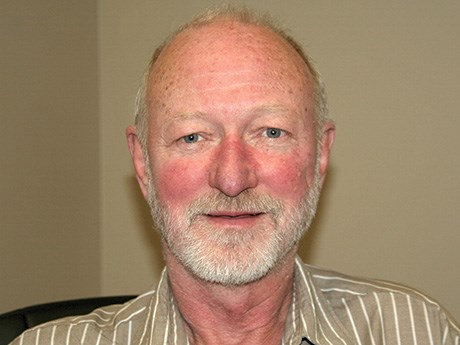System aims to more than double advance rates
A canopy solution designed to protect workers from falling rock and allow concurrent activity to take place in a development heading is scheduled to undergo testing at the NORCAT Underground Centre in Sudbury in June.
Built by Nordic Minesteel Technologies, a North Bay fabricator of mineshaft and haulage systems, and funded by the Centre for Excellence in Mining Innovation (CEMI), the canopy system is designed to increase advance rates by allowing drilling, charging and the installation of ground support to occur simultaneously.
The system consists of three canopies – one over the drill, the second one protecting the jumbo operator, and the third providing cover for the bolter. Each one is six metres in length and expands vertically and horizontally using hydraulics built into the steel frame to fit flush against the back and walls of a five-metre by five-metre drift, explained Richard DeRuiter, Nordic Minesteel’s vice-president of business development.
The section nearest the face is retracted and pulled into the middle section to provide clearance during blasting. Each canopy section is on skids and is pushed or pulled into place by a loader.
“Following the blast, you either bring the canopy up close again to get a scoop in there to remove the muck or you can use a remote control scoop and then bring the canopy in for the next round,” said DeRuiter.
Using current underground development methodology, drilling and ground support installation are performed sequentially, allowing the jumbo operator to work safely under supported ground. But this slows development and requires constant jockeying of jumbos, bolters and loaders to the face.
The development of the canopy is a key component of CEMI’s Rapid Development Project that includes the use of emulsion for blasting, jumbo charging and continuous mucking.
According to Doug Morrison, president and CEO of CEMI, the complete solution is expected to shorten the development cycle time from 16 hours to 10.5 hours or less, allowing for two cycles per 24-hour period.
Currently, notes Morrison, the typical advance rate is a mere three metres per day. With the complete solution in place, the advance rate is expected to more than double to 8.5 metres per day.
“For every kilometre, you gain 217 days, so for three kilometres of development you get to the orebody 22 months earlier.
In the case of an orebody that’s going to generate revenue of $3 billion, you’re adding $120 million to the net present value.”
A prototype of the canopy successfully underwent both static and dynamic load tests, holding up over the weight of a five-tonne concrete block per square metre.
“The shedding of loose material was something else we had to address,” said DeRuiter. “We did that by putting in hinged panels in the top of the two canopies closest to the face.” The panels flip down when unlocked by an operator standing clear of the canopy, allowing the loose material to fall to the ground.
The back canopy is designed with open ribs for installing bolts and screen. Screen is draped over the retracted canopy by a forklift. The canopy is then extended out to the dimensions of the drift, allowing a bolter to drive in and begin the installation process.
“Construction of the canopy is such that it’s all bolted together, so if you have an application where you have to take it apart and bring it down in a cage, you just disassemble it, bring it underground and put it back together,” said DeRuiter.
Testing at NORCAT will assess its ease of use and its impact on advance rates.
“Everyone we speak with responds very favourably to the concept,” said DeRuiter. “They can definitely see the potential.”
According to Morrison, CEMI has also come up with a solution for the continuous removal of muck from the drift heading (dispensing with use of a loader) and is in the final stages of capturing the IP (intellectual property). Once that’s resolved, CEMI will work with a local equipment manufacturer to design, build and test it.



